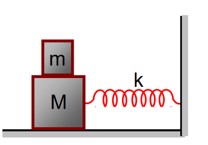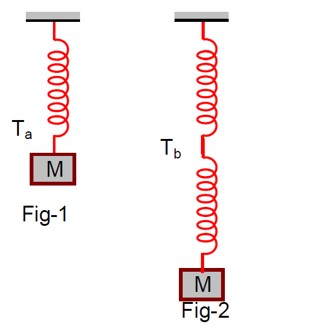14.7 The motion of a particle executing simple harmonic motion is described by the displacement function,
x(t) = A cos ( t + ).
If the initial (t = 0) position of the particle is 1 cm and its initial velocity is cm/s, what are its amplitude and initial phase angle ? The angular frequency of the particle is s–1. If instead of the cosine function, we choose the sine function to describe the SHM : x = B sin ( t + ), what are the amplitude and initial phase of the particle with the above initial conditions.
14.7 The motion of a particle executing simple harmonic motion is described by the displacement function,
x(t) = A cos ( t + ).
If the initial (t = 0) position of the particle is 1 cm and its initial velocity is cm/s, what are its amplitude and initial phase angle ? The angular frequency of the particle is s–1. If instead of the cosine function, we choose the sine function to describe the SHM : x = B sin ( t + ), what are the amplitude and initial phase of the particle with the above initial conditions.
-
1 Answer
-
Initially at t =0, Displacement, x = 1 cm
Initial velocity, v = cm/s, Angular frequency, = rad/s
It is given that: x(t) = A cos ( t + )
Then 1 = A cos (
A cos = 1 ….(i)
Velocity, v =
1 = -Asin(
Asin ………(ii)
Squaring and adding equations (i) and (ii), we get
= 1+1
A = cm
= -1
Then = , ,,,
SHM is given as X = Bsin( t + )
Putting the given values in this equation, we get
1 = Bsin( )
Bsin =1…….(iii)
Velocity V =
...more
Similar Questions for you
Velocity of block in equilibrium, in first case,
Velocity of block in equilibrium, is second case,
From conservation of momentum,
Mv = (M + m) v’
f? = 300 Hz
3rd overtone = 7f? = 2100 Hz
Kindly consider the following figure
K = U
½ mω² (A² - x²) = ½ mω²x²
A² - x² = x²
A² = 2x²
x = ± A/√2
Taking an Exam? Selecting a College?
Get authentic answers from experts, students and alumni that you won't find anywhere else
Sign Up on ShikshaOn Shiksha, get access to
- 65k Colleges
- 1.2k Exams
- 679k Reviews
- 1800k Answers


